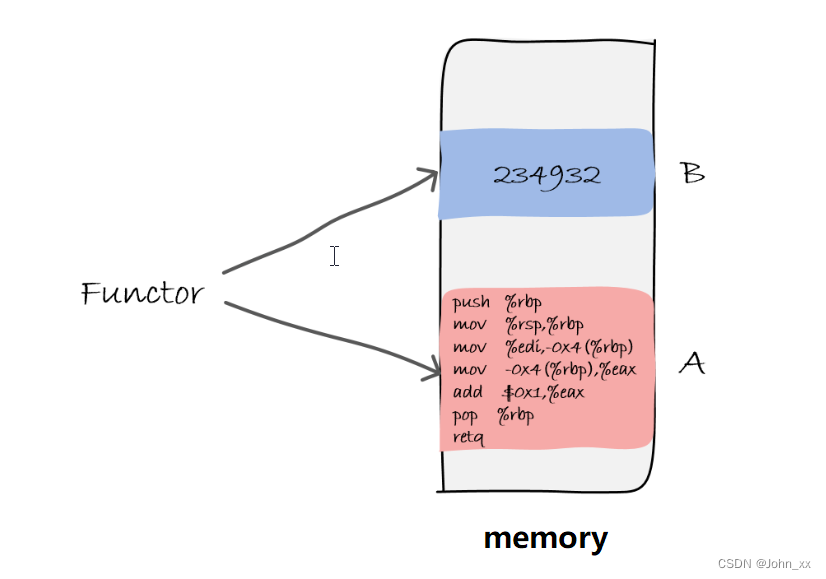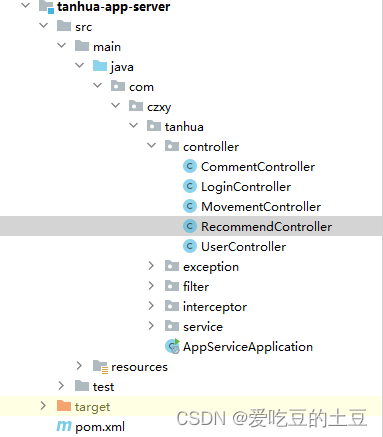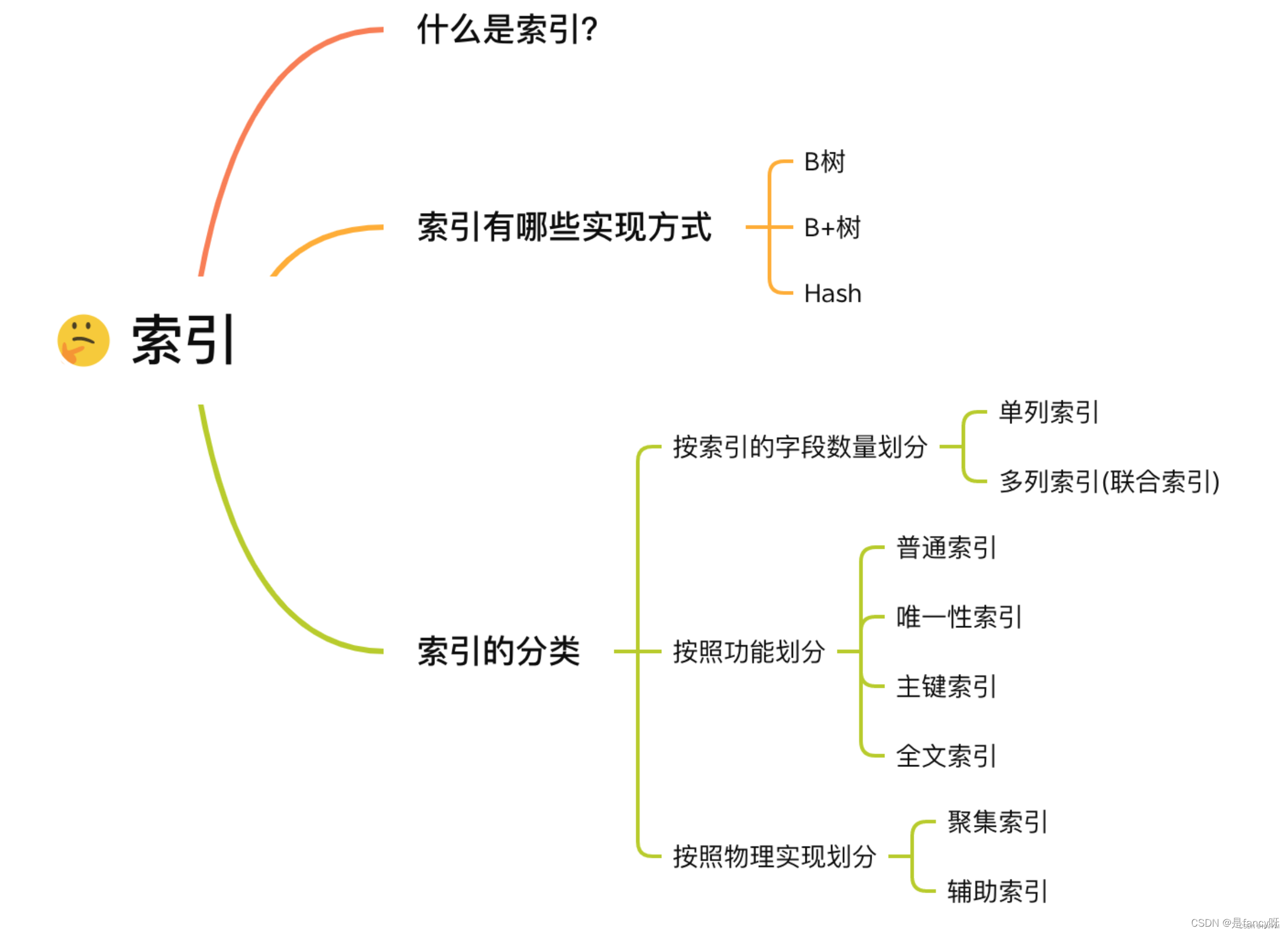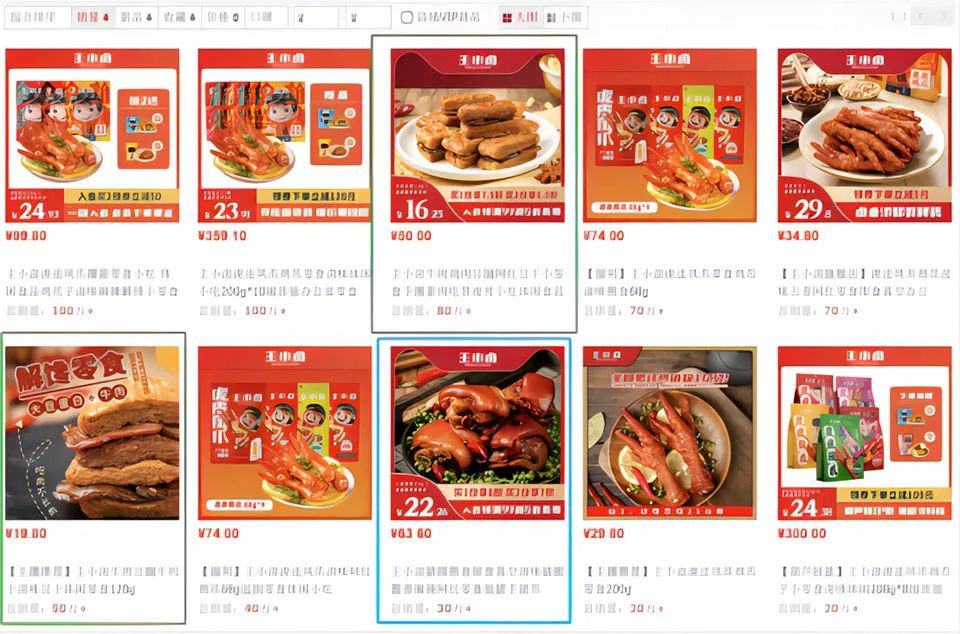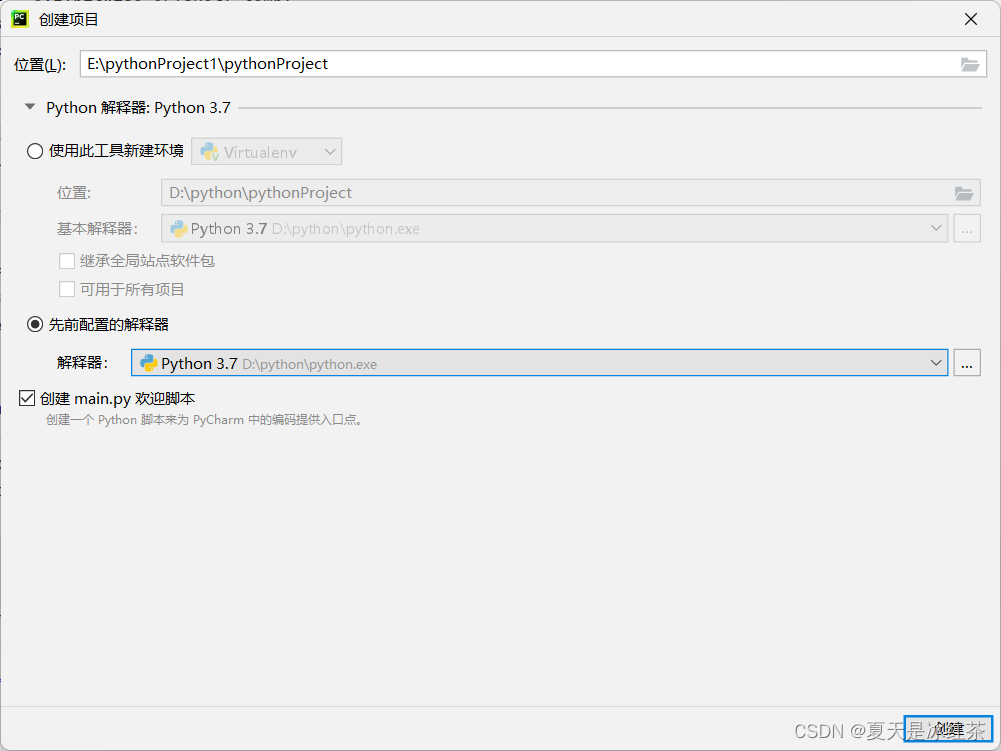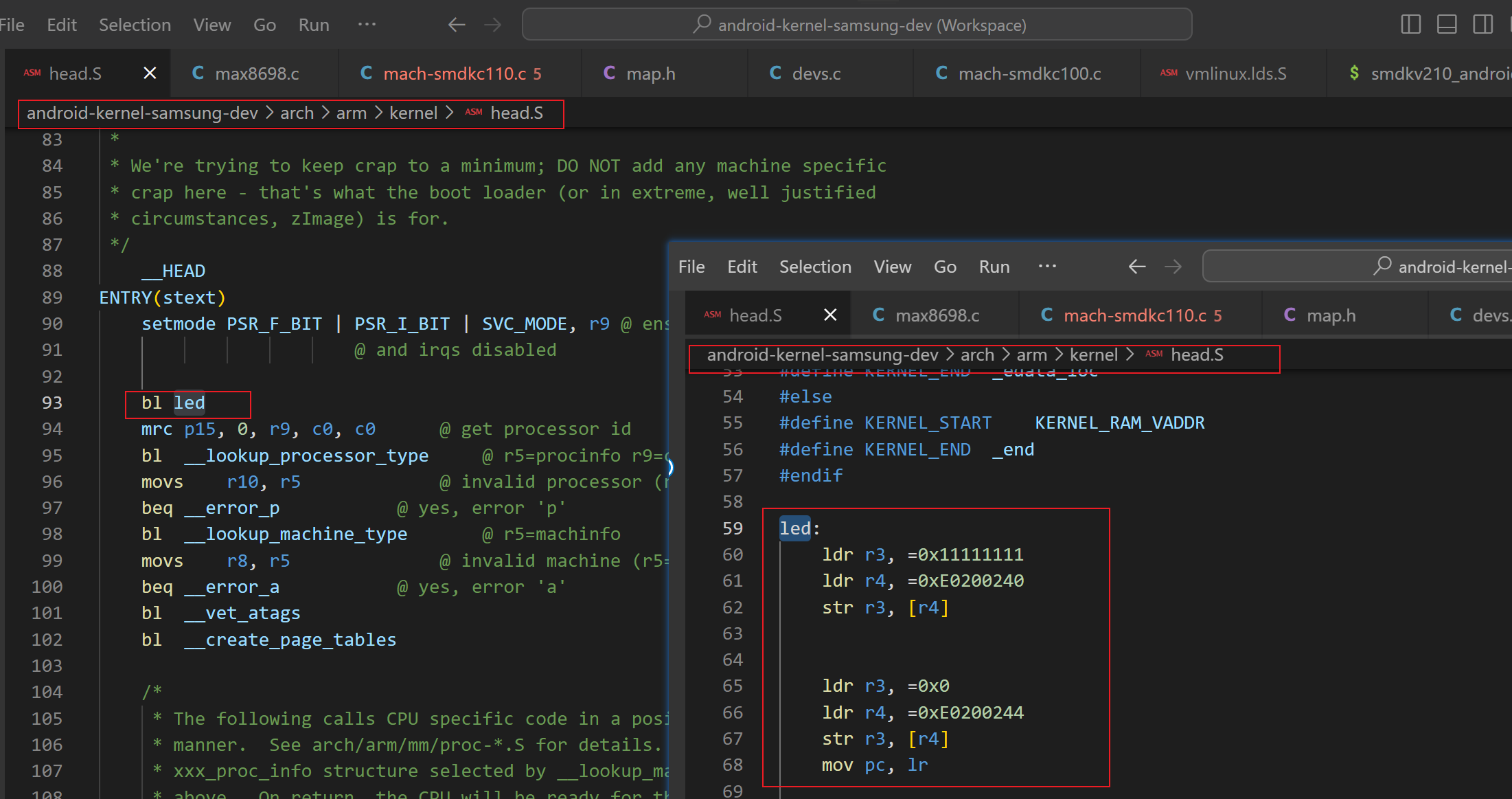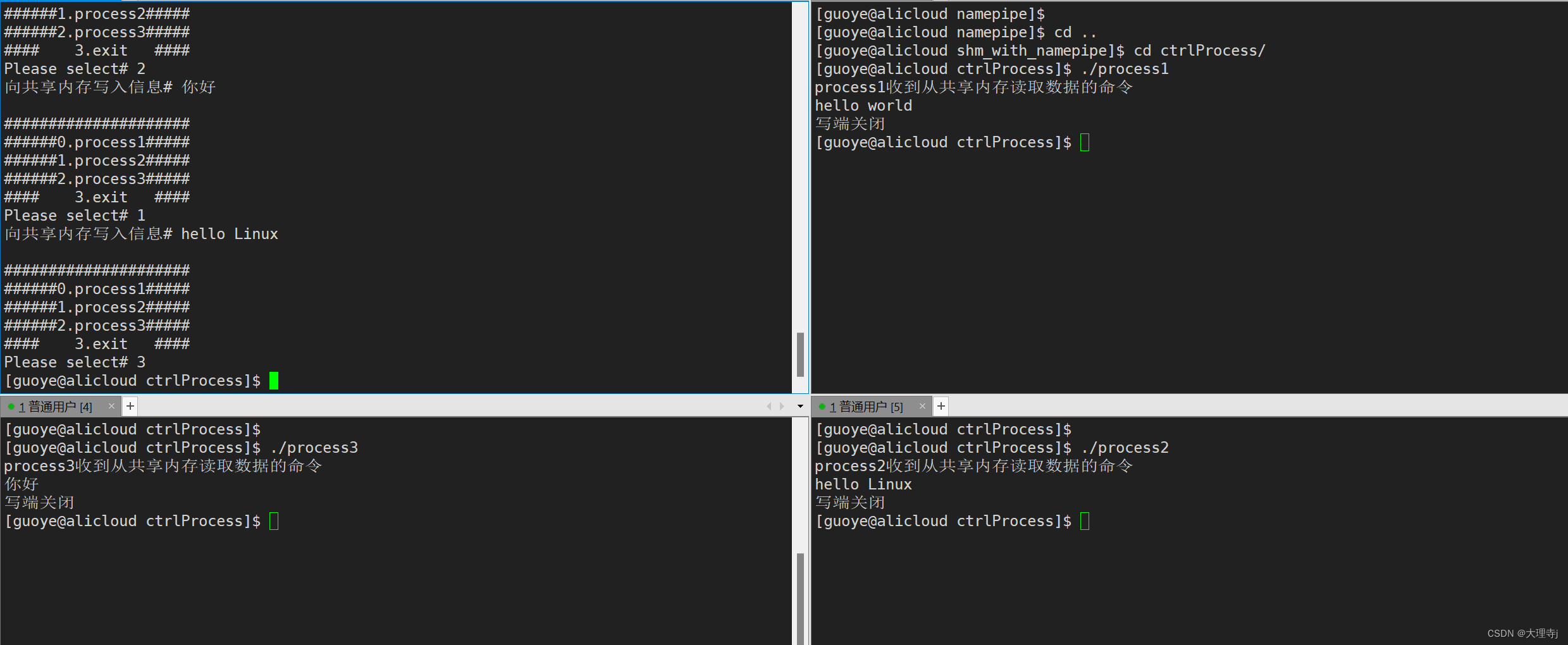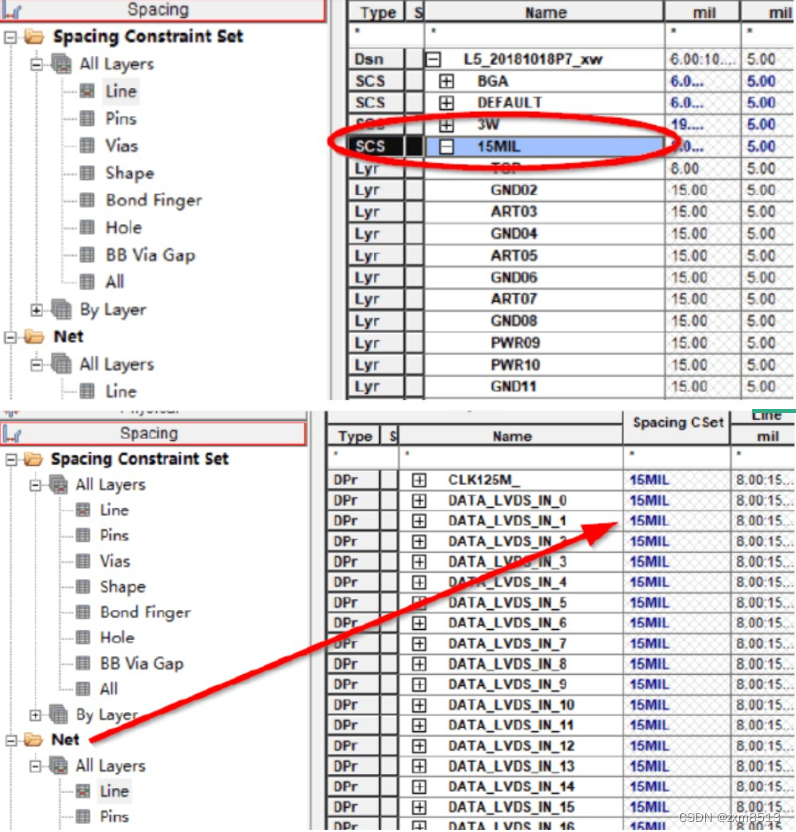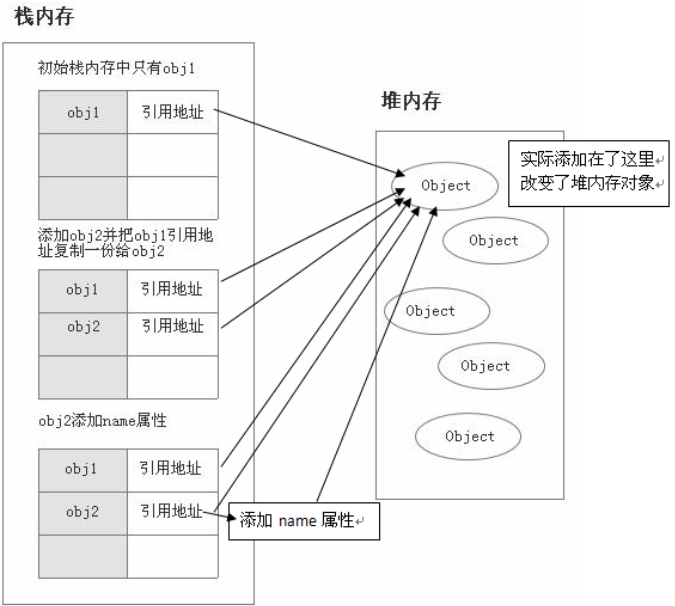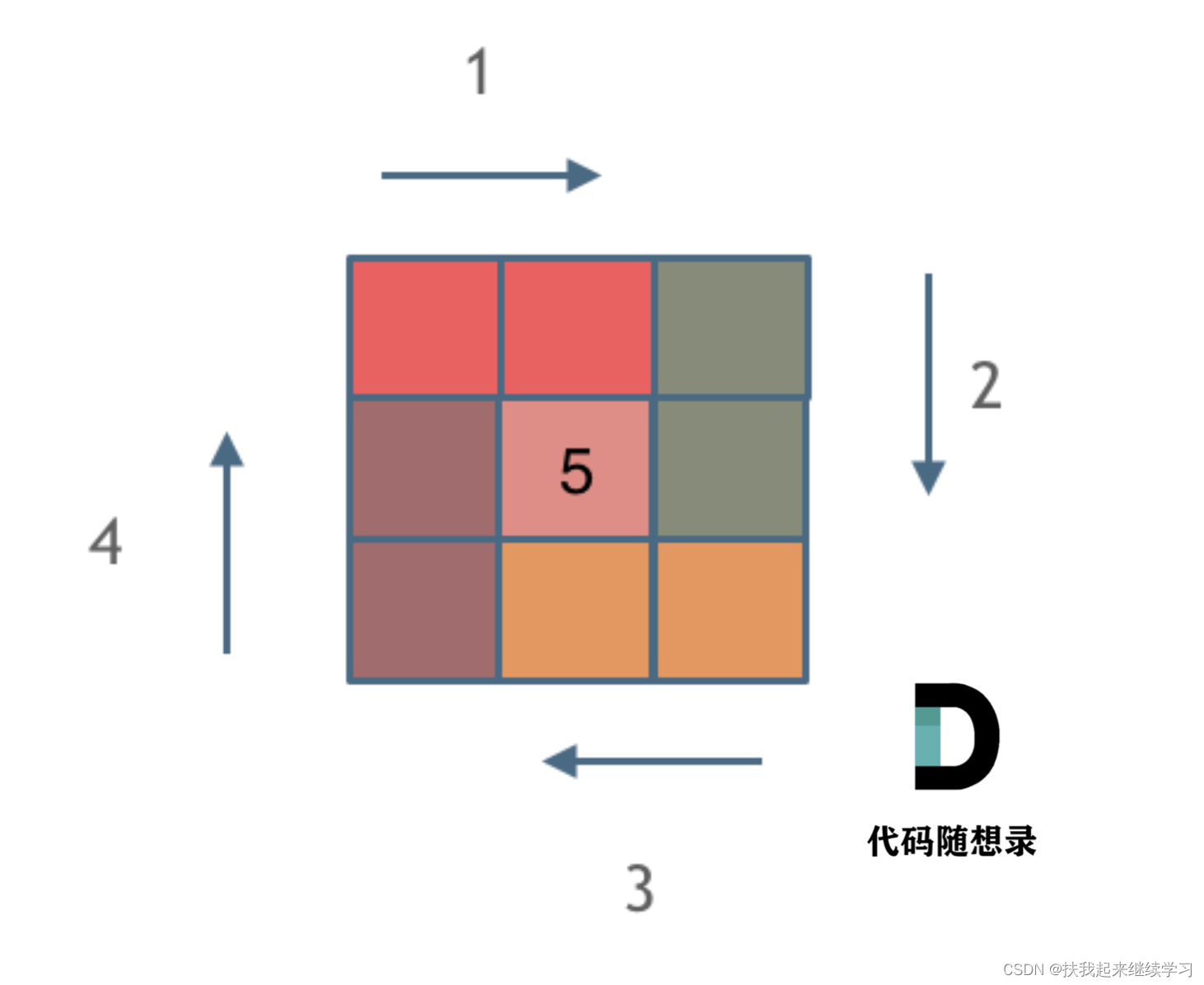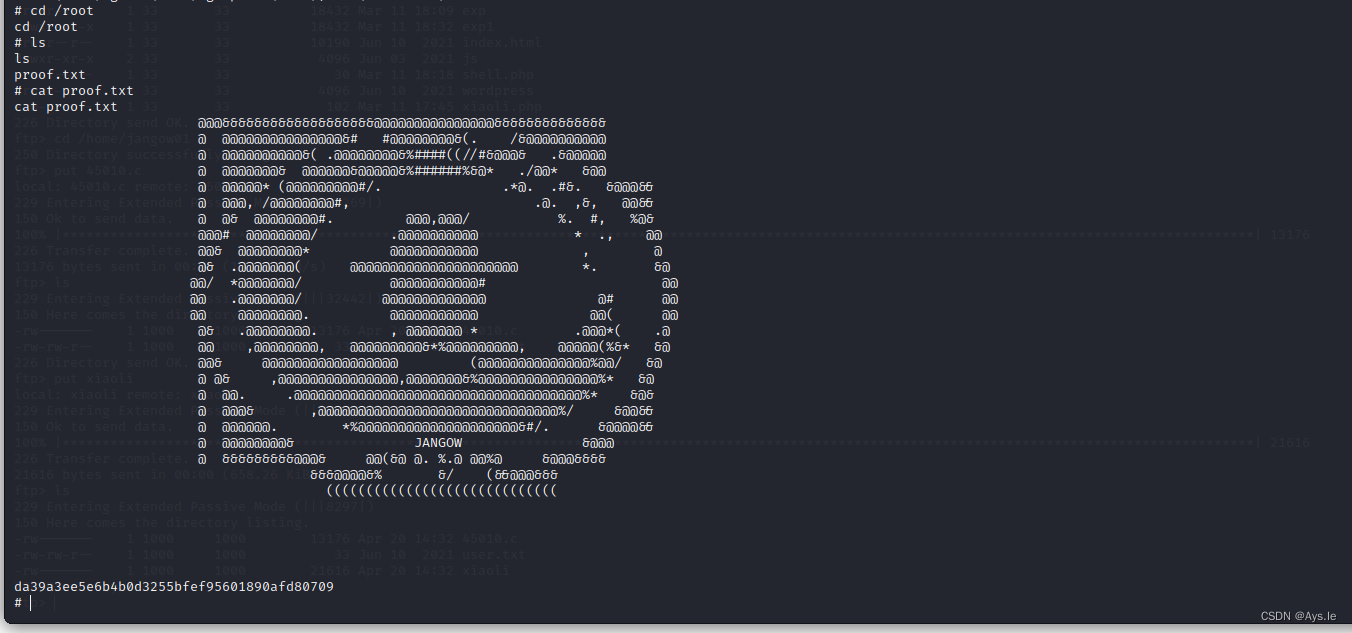目录
- 一、RestTemplate 不好的地方
- 二、Feign 是什么
- 三、使用
- 四、自定义 Feign 的配置
- (1) Feign 的几个常见配置
- (2) 配置 Feign 的日志级别
- ① 通过配置文件
- ② Java 代码配置日志级别
- 五、Feign 性能优化
- (1) 性能优化介绍
- (2) 修改 Feign 底层的 HTTP 请求客户端
- 六、Feign 的最佳实践
- (1) 方式一:继承(不好,不推荐)
- (2) 方式二:抽取
一、RestTemplate 不好的地方
Long userId = orderById.getUserId();
String url = "http://userservice/users/getUserById/" + userId;
User userById = http.getForObject(url, User.class);
✏️ 代码可读性差、编程体验不统一
✏️ 当发送网络请求时的请求参数特别复杂的时候,URL 难以维护
二、Feign 是什么
✏️ Github 地址:https://github.com/OpenFeign/feign
✏️ Feign 是一个声明式的 HTTP 客户端
✏️ 可帮助开发者优雅地发送 HTTP 请求
三、使用
✏️ 依赖
<dependency>
<groupId>org.springframework.cloud</groupId>
<artifactId>spring-cloud-starter-openfeign</artifactId>
</dependency>
✏️ 启动开关 @EnableFeignClients
@EnableFeignClients // 开启声明式 HTTP 客户端 Feign 的使用
@MapperScan("com.gq.order.mapper")
@SpringBootApplication
public class OrderApplication {
public static void main(String[] args) {
SpringApplication.run(OrderApplication.class, args);
}
}
✏️ 编写 Feign 客户端(声明远程调用的信息)
基于 SpringMVC 注解声明远程调用的信息:
① 服务名称:userservice
② 请求方式:GET
③ 请求路径:/user/{id}
④ 请求参数:Long id
⑤ 返回值类型:User
@FeignClient("userservice") // 服务名称
public interface UserFeignClient {
@GetMapping("/users/getUserById/{id}")
User getById(@PathVariable String id);
}
@Service
@Transactional
public class OrderServiceImpl implements OrderService {
@Resource
private OrderMapper orderMapper;
@Resource
private UserFeignClient userFeignClient;
/**
* 根据订单 id 查询订单
*/
@Transactional(readOnly = true)
@Override
public Order getOrderById(Long orderId) {
Order orderById = orderMapper.getOrderById(orderId);
if (orderById != null) {
Long userId = orderById.getUserId();
// 使用 Feign 发起远程调用
User userById = userFeignClient.getById(userId + "");
orderById.setUser(userById);
}
return orderById;
}
}
四、自定义 Feign 的配置
(1) Feign 的几个常见配置
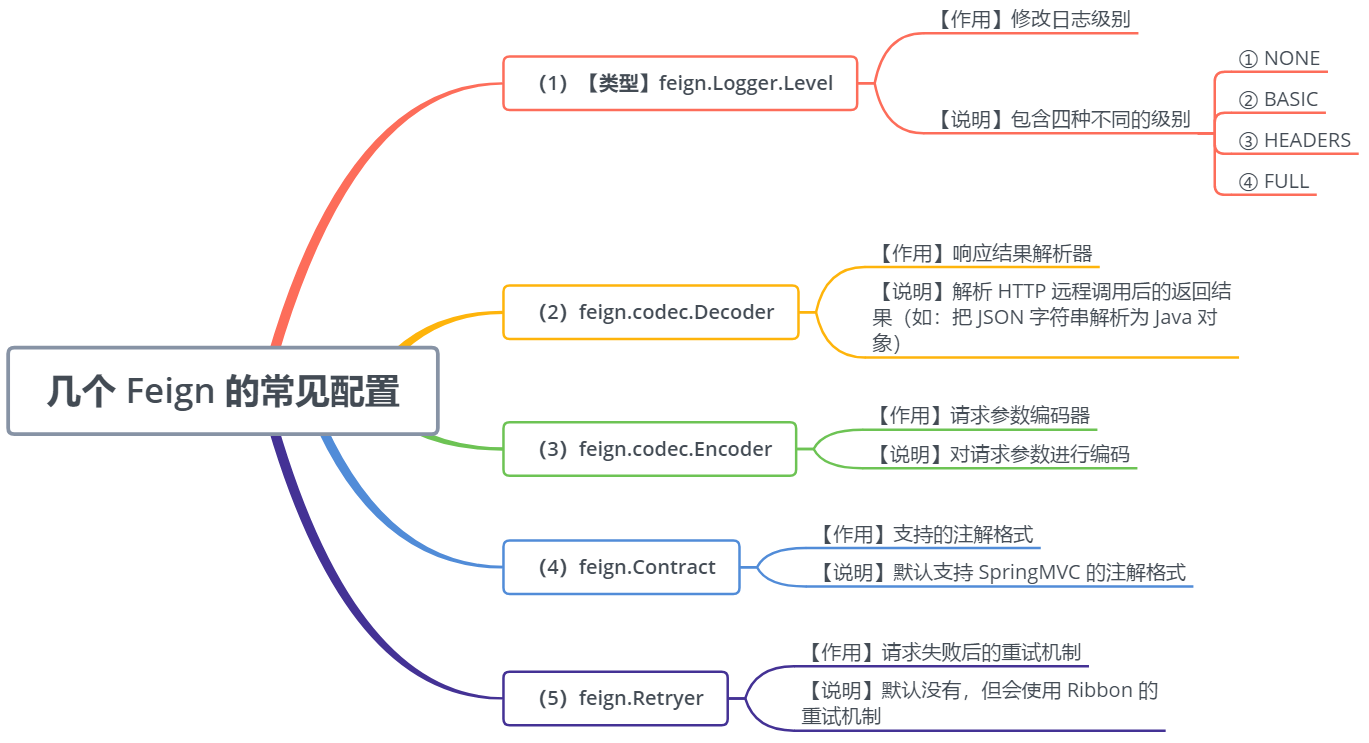
☘️ 一般修改的都是日志级别
(2) 配置 Feign 的日志级别
① 通过配置文件
全局配置:
feign:
client:
config:
default: # default 是全局配置(若写服务名称, 则是针对该微服务的配置)
loggerLevel: FULL # 日志级别
局部配置:
feign:
client:
config:
userservice: # 写服务名称表示只针对该微服务的配置
loggerLevel: FULL # 日志级别
② Java 代码配置日志级别
必须配置下面的配置结合 Feign 的日志配置才能有效果
logging:
level:
com.gq: debug
📖 创建 FeignClientConfiguration
/**
* 对 Feign 的配置(该配置类在 Feign 相关的注解中使用)
*/
public class FeignClientConfiguration {
@Bean
public Logger.Level feignLogLevel() {
return Logger.Level.FULL;
}
}
📖 若是全局配置,将 FeignClientConfiguration 配置类放在 @EnableFeignClients 注解中
// 全局配置 Feign 的日志级别
@EnableFeignClients(defaultConfiguration = FeignClientConfiguration.class)
@MapperScan("com.gq.order.mapper")
@SpringBootApplication
public class OrderApplication {
public static void main(String[] args) {
SpringApplication.run(OrderApplication.class, args);
}
}
📖 若是局部配置,将 FeignClientConfiguration 配置类放在 @FeignClient 注解中
// 局部配置 Feign 的日志级别
@FeignClient(value = "userservice", configuration = FeignClientConfiguration.class)
public interface UserFeignClient {
@GetMapping("/users/getUserById/{id}")
User getById(@PathVariable String id);
}
五、Feign 性能优化
(1) 性能优化介绍
📔 Feign 底层的客户端实现方案:
① URLConnection: 默认实现(不支持连接池)
② Apache HttpClient:支持连接池
③ OKHttp:支持连接池
📔 以上 OKHttp、URLConnection 和
Apache HttpClient是几种发送 HTTP 请求的客户端工具
📔 不使用连接池性能会很差
🍒 Feign 性能优化主要包括两个方面:
① 使用支持连接池的 HTTP 请求客户端 (如 Apache HttpClient、OKHttp) 代替 URLConnection
② 日志级别最好使用 BASIC或 NONE【debug 的时候才用 FULL】
(2) 修改 Feign 底层的 HTTP 请求客户端
🎁 添加 HttpClient 依赖
<dependency>
<groupId>io.github.openfeign</groupId>
<artifactId>feign-httpclient</artifactId>
</dependency>
🎁 在 yaml 文件配置连接池
feign:
client:
config:
default:
loggerLevel: BASIC # 打印基本的请求和响应信息
httpclient:
enabled: true # 开启 Feign 对 HttpClient 的支持
max-connections: 168
max-connections-per-route: 39 # 每个路径的最大连接数
六、Feign 的最佳实践
(1) 方式一:继承(不好,不推荐)
🎄 给消费者的 FeignClient 和提供者的 Controller 定义统一的父接口作为标准
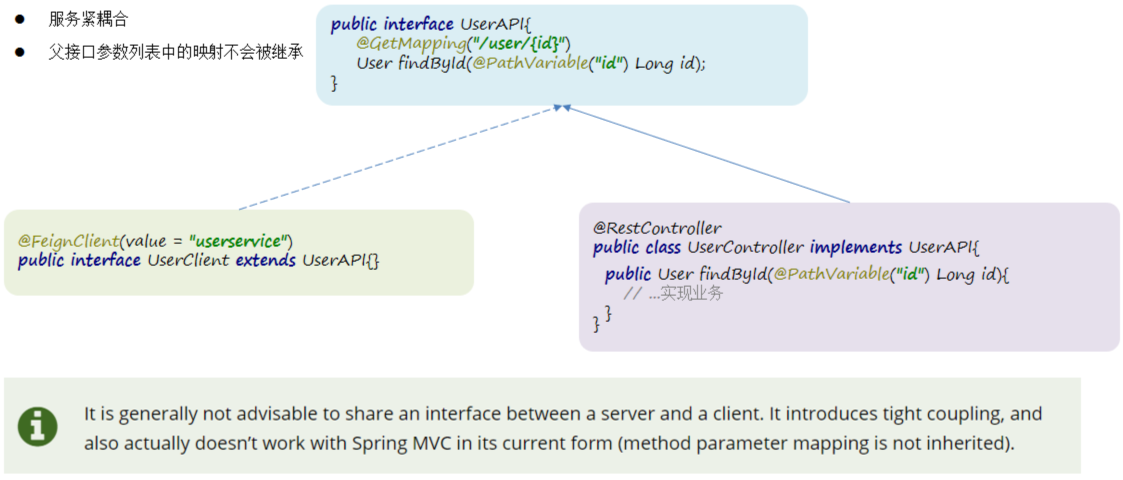
(2) 方式二:抽取
🎄 将 Feign 抽取为独立的模块

当定义的 FeignClient 不在 SpringBootApplication 的扫描包范围时,FeignClient 将无法使用(解决方法如下)
🚀 指定 FeignClient 所在包
@EnableFeignClients(basePackages = {"com.guoqing.feign"})
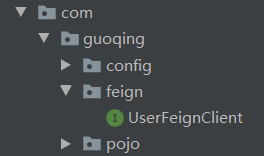
🚀 指定 FeignClient 字节码
@EnableFeignClients(clients = {UserFeignClient.class})
